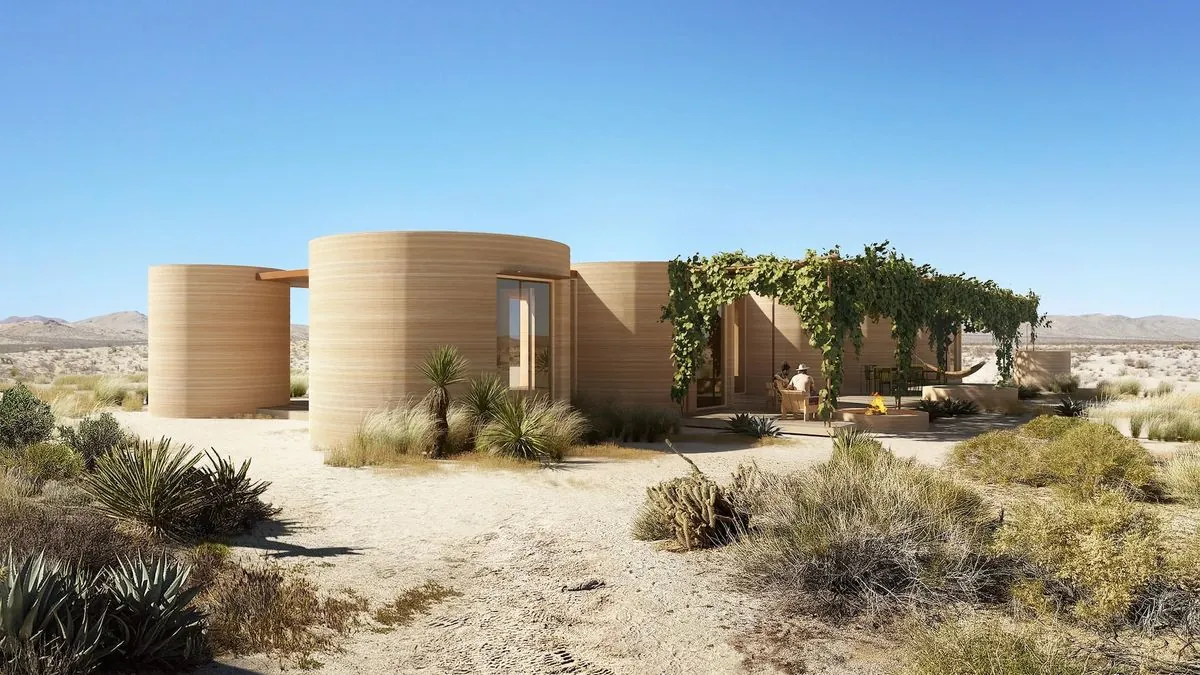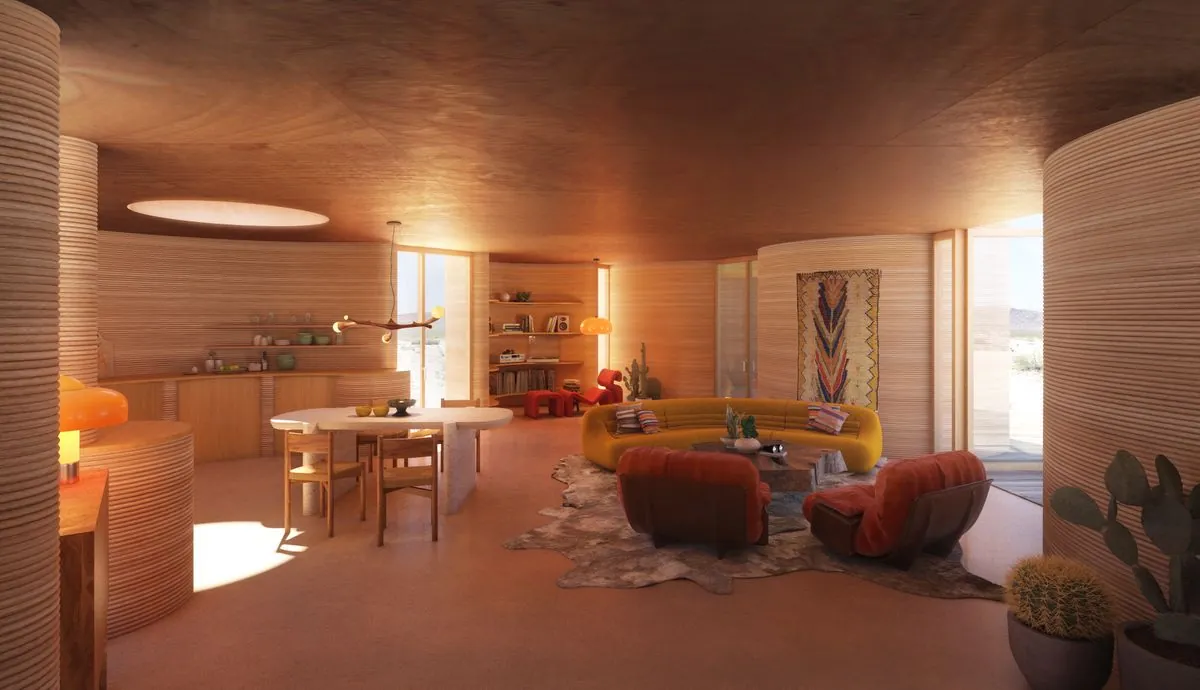World's First 3D-Printed Hotel Rises in Texas Desert
El Cosmico in Marfa, Texas, is expanding with 3D-printed structures. The project, set to complete in 2026, showcases innovative construction techniques and unique architectural designs.

In the heart of the Texan desert, a groundbreaking construction project is underway. Liz Lambert, owner of El Cosmico hotel and campground in Marfa, Texas, is spearheading an expansion that utilizes cutting-edge 3D printing technology to create the world's first 3D-printed hotel.
The ambitious project, a collaboration between El Cosmico, Austin-based 3D printing company ICON, and architects Bjarke Ingels Group, aims to construct 43 new hotel units and 18 residential homes across 40 acres of land. This innovative approach to construction marks a significant milestone in the architectural world, showcasing the potential of 3D printing technology in large-scale building projects.

3D printing technology in construction has come a long way since its inception in the 1990s. The world's first 3D-printed building was erected in China in 2014, and since then, the technology has rapidly evolved. Today, the global 3D printing construction market is projected to reach $1.5 billion by 2024, demonstrating the growing interest and investment in this revolutionary building method.
The El Cosmico expansion utilizes ICON's Vulcan printer, a massive 46.5-feet wide and 15.5-feet tall machine weighing 4.75 tons. This colossal printer is responsible for creating the curvy, beige-colored walls of the hotel units and residential spaces. The printer uses Lavacrete, a proprietary cement-based material designed for strength, affordability, and printability.
Jason Ballard, CEO and founder of ICON, explains that the composition of Lavacrete is adjusted based on weather conditions to ensure optimal printing results. This adaptability allows for consistent construction quality regardless of environmental factors.
One of the most significant advantages of 3D printing in construction is its ability to create unique architectural features that would be prohibitively expensive using traditional building methods. Lambert emphasizes the unprecedented creative freedom this technology offers, stating:
"I've never been able to build with such little constraint and such fluidity ... just the curves, and the domes, and the parabolas. It's a crazy way to build."
The use of 3D printing in construction offers numerous benefits beyond design flexibility. It can reduce waste by up to 30% and potentially lower construction costs by 20-40%. Additionally, 3D-printed buildings can be more resistant to natural disasters and designed for improved energy efficiency.
While the El Cosmico project represents a significant leap forward in construction technology, it also raises questions about the future of the industry. Milad Bazli, a science and technology lecturer at Charles Darwin University in Australia, points out that the widespread adoption of 3D printing in construction could potentially displace some skilled labor jobs, particularly in remote areas.
However, the technology also has the potential to create new job roles and address housing shortages in developing countries. NASA is even exploring 3D printing for building habitats on Mars, demonstrating the far-reaching implications of this technology.
The El Cosmico expansion is scheduled for completion in 2026, approximately 1 year and 9 months from now. Upon completion, the hotel units will be priced between $200 and $450 per night, offering visitors a unique opportunity to experience the world's first 3D-printed hotel in the artistic haven of Marfa, Texas.
As this groundbreaking project takes shape in the Texan desert, it serves as a testament to the rapidly evolving world of construction technology and the endless possibilities it presents for the future of architecture and housing.


































